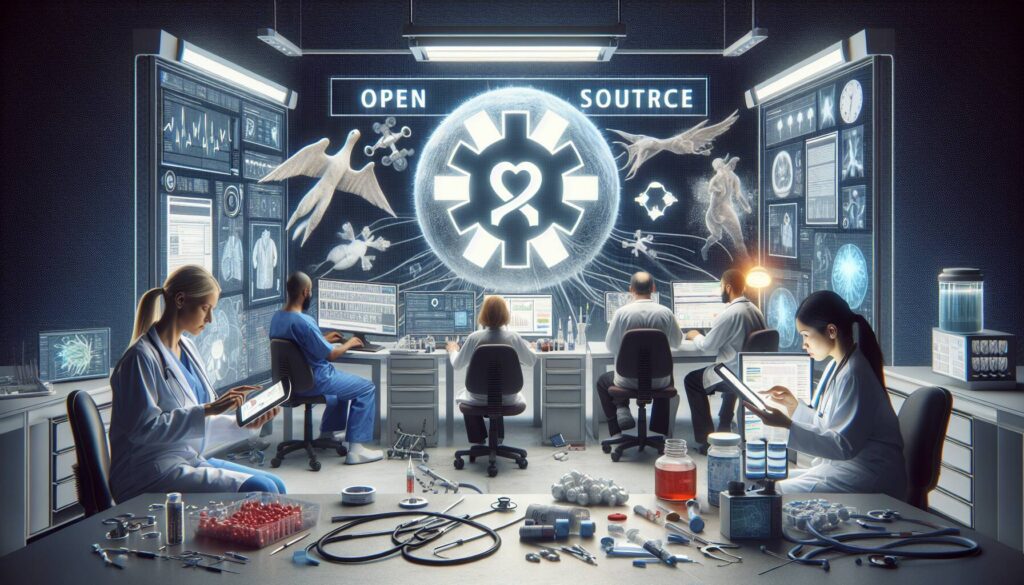In a bold statement that has sparked discussions in both the healthcare and cryptocurrency communities, Charles Hoskinson, the founder of Cardano and an early Ethereum co-founder, shared his unfiltered views on the American healthcare system during a recent interview with CoinDesk TV at the Rare Evo conference in Las Vegas. Hoskinson believes that rather than being broken, the system is functioning exactly as intended, and that is where the major issues lie.
“Healthcare is just fucked in America. It’s just fucked. Everybody knows it’s true,” Hoskinson declared, shedding light on the entrenched problems within the industry.
Despite his candid critique, Hoskinson is not merely voicing grievances; he has committed a staggering $200 million to develop a new medical center in Gillette, Wyoming, aimed at transforming the patient experience. His approach prioritizes care over profit, with a straightforward philosophy: “If they can’t pay, don’t charge ’em.”
At the heart of Hoskinson’s concerns is the flawed payment model for doctors. He argues that the current system incentivizes a one-size-fits-all approach to patient care, where physicians are compensated equally regardless of the complexities involved in treating older patients with multiple health issues compared to younger, less complicated cases.
“All the financial incentives are just horrible and wrong inside healthcare,” he noted, urging for a reevaluation of how care is delivered.
To address these systemic inefficiencies, Hoskinson envisions a healthcare facility built around the patient. He plans to implement cutting-edge technologies, including artificial intelligence and blockchain, to create a more coordinated and responsive healthcare environment. AI is intended to assist, not replace, healthcare providers by providing them with comprehensive insights into patient history and potential treatment plans.
His forward-thinking blueprint also includes innovative uses of blockchain technology, allowing for secure verification of information without exposing sensitive personal data. Additionally, Hoskinson is committed to sharing his model openly, aiming to inspire similar healthcare transformations across the country.
“We’re not here to make money off of [it]. The goal is to open source them, open source the software, you know, get that care system out there,” he said.
However, Hoskinson faces significant challenges from established medical institutions that are resistant to change. He claims that bureaucracy and credentialing procedures are acting as major roadblocks in his mission to implement a patient-first healthcare model.
“The hospital there is trying to kill us,” Hoskinson asserts, highlighting the difficulties encountered when trying to credential top-tier medical professionals.
Determined to make a lasting impact, Hoskinson views this endeavor as a pivotal aspect of his legacy and family lineage. “I legitimately wanna solve this problem. I think it’s my legacy and it’s the family’s legacy and it’s also the single most important thing in America,” he said.

Revolutionizing American Healthcare
Key points from Charles Hoskinson’s vision of transforming the healthcare system:
- Systemic Issues:
- Hoskinson believes the American healthcare system is functioning as intended but is flawed.
- Financial incentives in healthcare discourage personalized care and long-term patient relationships.
- Current payment structures promote treatments that keep patients chronically ill rather than healthy.
- Investment in New Model:
- Hoskinson is investing $200 million in a patient-centered medical facility in Gillette, Wyoming.
- The model aims to eliminate upfront charges for patients unable to pay, prioritizing patient care over profits.
- Use of Technology:
- Plans to incorporate artificial intelligence and blockchain to improve care quality.
- AI will assist healthcare providers in delivering informed, customized care based on comprehensive patient data.
- Open Source Philosophy:
- The project’s architecture and software will be open-sourced to enable replication in other areas.
- Intended not for profit but to promote a scalable, effective healthcare solution.
- Policy Changes Advocated:
- Calls for a rethinking of health insurance models to focus on catastrophic care rather than comprehensive coverage for minor issues.
- Resistance from Traditional Systems:
- Faced opposition from existing healthcare institutions regarding credentialing for doctors involved in the new model.
- Sees the struggle as a significant challenge, likening it to a David versus Goliath scenario.
“We’re not here to make money off of it. The goal is to open source them.” – Charles Hoskinson
Charles Hoskinson’s Bold Healthcare Transformation: A Disruptive Vision
In a landscape where the American healthcare system faces mounting criticism, Charles Hoskinson’s perspective is refreshingly disruptive. With his hefty $200 million investment into a new patient-centric medical center in Gillette, Wyoming, Hoskinson challenges the status quo of a conventional system perceived as profitable yet deeply flawed. What sets Hoskinson apart from others who have attempted healthcare reform is his technological frontline—leveraging AI and blockchain to reshape patient care away from the financially-driven metrics that often dictate treatment paths.
Much like other healthcare innovators, such as those behind the direct primary care model or telehealth platforms, Hoskinson’s approach emphasizes transparency and efficiency. By proposing an open-source model, he invites collaboration rather than competition, which could significantly benefit underserved populations. However, the intricate engagement with existing healthcare protocols, particularly the administrative and bureaucratic barriers he faces, reveals a significant disadvantage. Traditional healthcare institutions are heavily invested in maintaining their current modus operandi, often resisting change that threatens their established revenue streams.
It’s a classic clash of ideals—where Hoskinson’s ambitious vision for inclusive healthcare could empower countless patients seeking affordable and personalized care, it simultaneously creates friction with entrenched systems unwilling to adapt. Furthermore, his emphasis on using AI as a supportive tool rather than a replacement positions doctors for enhanced capabilities, offering a competitive edge in a market often criticized for dehumanizing patient interactions.
His narrative resonates with a segment of the population disillusioned by the American healthcare experience—especially those burdened by the complexities of insurance and treatment costs. However, for established healthcare practitioners and institutions that thrive within the current economic framework, Hoskinson’s venture may signal a challenge that threatens not only their financial stability but also their operational paradigms.
Ultimately, Hoskinson’s efforts to reshape healthcare could catalyze significant improvements in patient experience for many, while simultaneously igniting resistance from those closely tied to the conventional system. The implications of this disruption echo the ongoing dialogues in the healthcare arena, where the future of patient care hangs in a delicate balance between innovation and tradition.

















